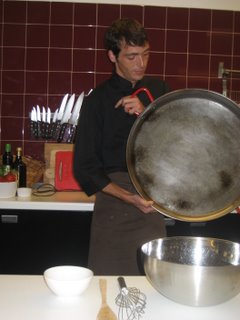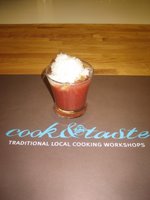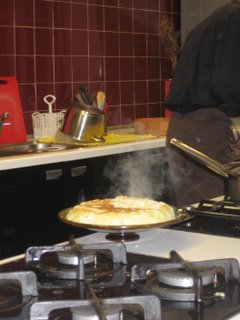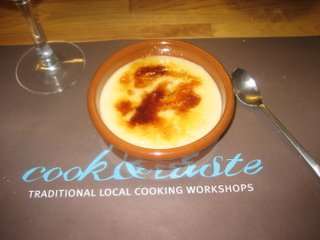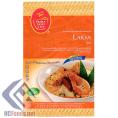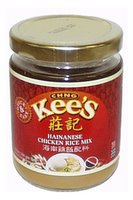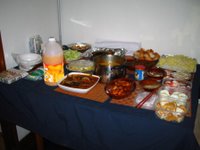
Had the art club folks over for New Year's Day lunch. Shrl was back on vacation from school, and her sis Liz was in town. Scintillating conversations as usual about everything from church planting to building a treehouse. Now, the cool thing about hosting the art folks is that they don't tease me so much (*unlike other people*) about my fussiness with table settings. I was pleased last week to have found some beautiful teacups and bowls from Daiso ($2 each!), as well as Nippon matching napkins on the cheap from the Ikea sale. Having a good dining experience is as much about the setting as it is about food!
Lunch was kept simple because of the late watchnight service the evening before, I woke up pretty late but the great thing about doing Japan Hour is that there is not really a lot of cooking involved, just some thought and planning ahead to get the right ingredients to pull together. I think the folks appreciated the lightness of the fare served because of all the rich foods everyone had over Christmas! Made some shrimp avocado wraps, sumi salad, and dug up an old recipe for sushi lemak that I used to make in HK for lemak-deprived folks. Recording the sushi lemak recipe for posterity here as I am sure to lose it otherwise.
Ingredients
Organic jasmine rice
Jap cucumber sliced very evenly into long strips
Nori seaweed for rolling
Tamago cut into long strips of same dimensions as cucumber
Coconut milk
Pandan leaves
Cook rice in coconut milk with pandan leaves as you would nasi lemak (not as easy as it sounds, as it tends to get either too wet or too dry). Sprinkle some salt to taste. You can afford to be heavy handed with the lemak in the rice because it adds to the surprise when you can really taste nasi lemak in a sushi roll!
Let rice cool completely. If you are kancheong like me, put it in the fridge and go for a run. Don't attempt to roll sushi when the rice is still warm!
Lay two nori sheets one on top of the other, but overlapping them halfway, so that you get more "mileage" out of the roll. Place the rice, cucumber and tamago on the nori sheets to make maki rolls out of them. The maki will turn out be bigger than usual, but that's fine. Anything lemak has to be hearty!
What I was seriously lacking was a proper sharp sushi knife. Had such difficulty cutting up the roll into neat pieces, sigh. Must remember to buy a knife next trip to Japan. I am not whether it would be legal to check into the luggage though hmmm...













